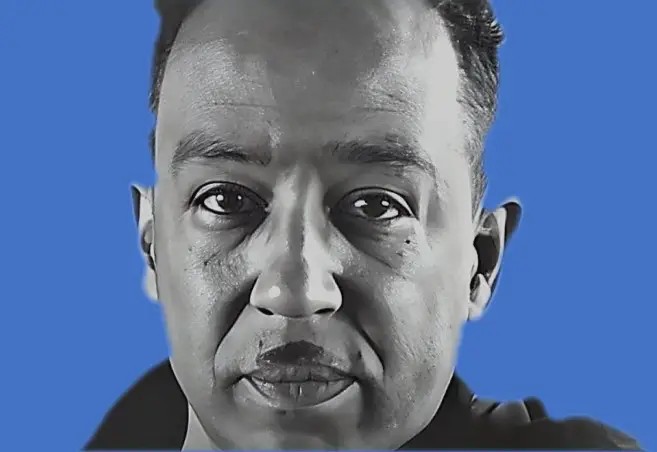LANGSTON HUGHES AND POETRY – The Powerful Voice of a Renaissance

LANGSTON HUGHES
An influential figure in the Harlem Renaissance, novelist, playwright, American poet, and newspaper columnist Langston Hughes was born on February 1, 1902, in Joplin, Missouri, United States, and died on May 22, 1967, in New York, New York. His works covered a wide spectrum of topics, including the African American experience. A major player in the Harlem Renaissance—the 1920s American renaissance of Black intellectualism, literature, and art—Langston Hughes was a resident of Harlem and other locations around the country.
Novels, short stories, essays, plays, and poetry were all works of Hughes. He avoided emotional idealization and negative stereotypes in an effort to properly depict the ups and downs of working-class Black existence. Still, no Black poet or writer has done a better job than Hughes of accurately capturing the complexities and hardships of Black life.
A Brief Biography of Langston Hughes
Although it was previously thought that Langston Hughes was born in 1902, new evidence published in 2018 suggests that he might have been born the year before. He was brought up by his grandmother and mother after his parents split up shortly after he was born. Following his grandmother’s passing, he and his mother relocated to six different places before finally settling in Cleveland.
After finishing high school in Cleveland, Hughes penned the poem The Negro Speaks of Rivers that summer. It was published in The Crisis in 1921 and garnered him a lot of attention. After attending Columbia University in New York metropolis from 1921 to 1922, he worked as a steward on a freighter bound for Africa and explored Harlem, where he formed an indelible attachment to what he termed the “great dark city.”
After a voyage and a sojourn in Europe, Hughes returned to New York City in 1924 and met Carl Van Vechten and Arna Bontemps, two writers whose connections would have a lasting and impactful impact on his life. In the late year 1925, while Hughes was working as a busboy in a hotel in Washington, District of Columbia, he placed three of his own poems next to the plate of Vachel Lindsay that was placed in the dining room room.
gained more attention the next day when newspapers nationwide stated that Lindsay, one of the most famous white poets of the day, had discovered an African American busboy poet. He then wrote his first book of poems, The Weary Blues, which came out in 1926. Hughes started his studies at Pennsylvania’s Lincoln University in early 1926 after receiving a scholarship to attend the school. He authored a manifesto in The Nation that year called “The Negro Artist and the Racial Mountain,” in which he demanded a self-assured, distinctively Black writing; he also won the Witter Bynner Undergraduate Poetry Award that year.
In 1925, Hughes was awarded a poetry prize by Opportunity magazine. Van Vechten also brought Hughes’s poetry to the attention of publisher Alfred A. Knopf that year; Knopf accepted the book, which would be published as The Weary Blues in 1926. A number of notable individuals were moved by his poetry, including Lorraine Hansberry, a playwright, and Martin Luther King Jr., a civil rights activist.
Throughout his work, Hughes used a variety of common experiences, both good and bad, in his portrayal of African Americans from working-class backgrounds. The poet, who had recently relocated to New York City, was an early adopter of jazz rhythms and slang in his poetry. Even though he became one of the first Black Americans to make a career as a writer in 1930, Hughes was still not confident he could do it until 1930, because his work was so revolutionary.
Hughes was prolific in numerous literary works, including novels (such as 1930’s Not Without Laughter), short tales, autobiographies (such as 1940’s The Big Sea and 1956’s I Wonder as I Wander), and plays (such as Mulatto). In 1937, he covered the Spanish Civil War for multiple American publications and also contributed columns to the Chicago Defender.
In a piece that was published in The Nation five years after the publication of his first poem, Langston Hughes stated that an artist must, without a doubt, be free to select what he does, but he must also never be scared to execute what he might choose. At a period when legal segregation was prevalent, he remained true to these sentiments throughout his career, focusing on the common experiences of Black people like himself. Hughes was a prominent figure in the Harlem Renaissance, and his straightforward and lyrical poetry is still read and thought about today.
The prolific writer passed away from cancer in 1967 at the age of sixty-five, yet his work lives on. His Harlem brownstone house was designated a historic site in 1982, several schools are named after him, and his poetry, above all else, is still deeply felt.
Ten of Langston Hughes’s Finest Poems
These ten poems by Langston Hughes are must-reads because they speak to the American spirit.
Harlem —1951
This is one of his most well-known short poems, and it explores the concept of the American Dream: the belief or ideal that anyone, irrespective of origin, can achieve success in life by immigrating to the United States.
The poem explores the contradiction between being a part of a disadvantaged community and the American dream. Hughes’s comments served as the inspiration for the title of Lorraine Hansberry’s play A Raisin in the Sun, which was written in 1959 and is about a Black family that is having a difficult time making ends meet. Martin Luther King Jr. made reference to it in a number of his sermons and speeches. The original idea for Harlem came from a longer poem called Montage of Dream Deferred that was meant to be a book. More than ninety poems set to a rhythmic accompaniment provide a vivid image of Jim Crow-era Harlem, the subject of the poem’s concluding phrase.
Let America Be America Again
Langston Hughes, like numerous other 20th-century American literary giants, provided his own interpretation of the American Dream, which posited that success, prosperity, and contentment were attainable for anyone residing in or aspiring to reside in America. The fact that the ‘dream’ or ideal is not always met by reality is something that he brilliantly expresses in this poem, which is one of his most well-known works.
By virtue of his identity as an African-American writer, he provides a unique vantage point from which to examine the discrimination that Black Americans endure: Hughes describes how he always felt like an alien in America and how he never really felt like an American. However, he broadens the scope of the experiences he depicts in the poem by including the perspectives of both white and indigenous Americans in his picture of America.
Dreams — (1922)
Aptly titled, this 1922 poem by Hughes was published in World Tomorrow along with several others that dealt with dreams. The eight-line poem Dreams is still often used as a motivational quote I, Too — (1945)
Langston Hughes frequently delves into the experiences of African Americans residing in the United States, particularly in New York, during the early 1900s. He was inspired to write I, Too by his 1924 ordeal of being denied entry on multiple ships bound for the United States from Italy, all the while white sailors were warmly welcomed. Consequently, racial inequality is plainly an important subject in Hughes’ poetry. I, Too is Hughes’s direct attack on segregation. It is common to classify this poem as a protest poem. The poem deftly juggles its celebratory tone with its more somber tone.
Mother to Son (1922)
Mother to Son was published in the December 1922 issue of “The Crisis” and featured recitations from famous people including Martin Luther King Jr. and star Viola Davis.
In this brief poem of twenty lines, Hughes takes on the role of a mother speaking to her son, conveying the perspective of an African American woman who has overcome adversity by asking him to keep going and not give up. Mother to Son illustrates the tribulations of life, specifically those endured by an African-American mother in early 20th-century America, through the metaphor of a stairwell. Hughes uses the image of the stairs to express two ideas: first, the challenge of sticking with something when things go rough; and second, the idea of social climbing, or moving up the social ladder in terms of money, status, and cultural acceptability.
Still Here
Langston Hughes possessed an exceptional ability to convey profound feelings with little language. There is no exception to this rule, as evidenced by the little poem Still Here, which depicts overcoming and defying the odds. The poetic voice goes from being hopeless to triumphant, and the reader can’t help but experience all of the emotions that are being expressed.
Montage of a Dream Deferred
Published as a book-length poem in 1951, this is a lengthier piece of Langston Hughes’s later work. This highly experimental poem by Langston Hughes takes its readers on a round-the-clock tour of his native Harlem in New York City, drawing inspiration from the syncopated rhythms and abrupt changes of direction typical of jazz to portray the complexity of contemporary urban life. Once again, the title alludes to the centrality of the dream motif—a favored metaphor of Langston Hughes—in the poem, as Hughes juxtaposes the ideal with the actual world.
I Look At The World
If the phrase Let America Be America Again sounds like a negative tone, then people should keep in mind the rallying cry that is contained within the title of that poem: Langston Hughes was always hopeful that a better future for his country was only around the corner. And in this poem, Hughes portrays the world as he sees it from the perspective of a black American poet: he was filled with hope that he might transform the reality he saw into the world he dreamed of.
Po’ Boy Blues — (1926)
This poem, along with three others by Hughes, debuted in Poetry Magazine in November 1926 and is part of Hughes’s collection The Weary Blues. Its stanzas and rhymes give it a musical quality. Langston Hughes was not hesitant to openly express his feelings about issues affecting his people, particularly through his very personal style, which may be why his poems have such a profound impact on readers.
Rivers Speak Negro (1921)
Hughes’ first published poem, The Negro Speaks of Rivers, was written while he was seventeen years old on a train to Mexico City to visit his father. Critically acclaimed, it was published in the June 1921 issue of The Crisis, the NAACP magazine. The poem’s first lines reveal a spirit older than his years. The style pays homage to the works of Carl Sandburg and Walt Whitman, two of his artistic influences, and the spiritual music of African Americans.
RELATED: AUTHOR VIRGIL – THE AMAZING BIOGRAPHY OF PUBLIUS VERGILLUS MARO
